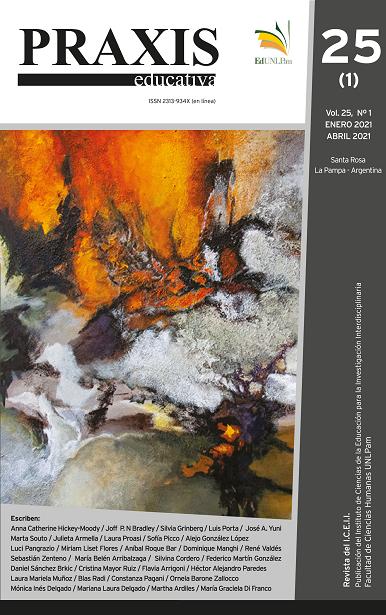Cartographies of the Gaze of the Other/Other Gazes: Youth, Slums, and Audiovisual Production in the Post-Media Age
Keywords:
postmedia era, schizo cartography, gaze other, young people, urban povertyAbstract
Is there an specific gaze (to the) other? If so, what is it like? On the basis of audiovisual work produced during over ten years by young people who live in the urban slums of the Buenos Aires, we will attempt to address that which we call cartographies of gazes other. Who is the other when the narrator is the one usually
positioned as the other? A word, a gaze, and it’s display emerge from lived experience, from the possibility of narrating that experience: the other through the other. If, as Guattari (1986) argues, subjectivity is the problem of any political system in contemporary societies, we will propose a schizo cartography as a means to
approach what is singular in the act of looking, an image-thought that can delineate something like a radicalization of the other gaze in the postmedia era. An era that fluctuates between infantilization, indifference, and generalized equivalence, on the one hand, and, on the other, the possibility of singularity and phrases uttered in the most ordinary situations, the possibility of embracing otherness without reservation.
Downloads
Downloads
Published
Issue
Section
License
Copyright Notice
Editorial Committee Educational Praxis Magazine:
I hereby declare that I am the author of the article titled (article name), that it is original and my own and that it was not previously published in any other format or medium. I declare to know that the magazine will not charge me any type of fee under any circumstances, nor will I receive any type of monetary compensation If it were accepted for publication in Educational Praxis, I authorize the aforementioned magazine to publish it digitally and to advertise it on its social networks.
If the work is published, I adhere to the Creative Commons license called "Attribution - Non-Commercial Share Alike CC BY-NC-SA", through which it is allowed to copy, reproduce, distribute, publicly communicate the work and generate derivative works, as long as when the original author is cited and acknowledged. This license has been used since September 2018. In 2016 CC BY NC ND 4.0 was adhered to; and in the years 2017 and 2018 (January-August) CC BY NC 4.0.
This CC BY-NC-SA Share Alike license does not, however, permit commercial use of the work. As an author, the journal may establish additional agreements for the non-exclusive distribution of the version of the work published in the journal, it allows me to self-archive the published articles, in their post-print version, in institutional, thematic repositories, personal web pages or any other relevant use. with the recognition of having been first published in this journal.
Educational Praxis adheres to DORA (Declaration on Research Assessment) signed in San Francisco, California, on December 16, 2012, and to the Declaration of Mexico (Joint Declaration LATINDEX - REDALYC - CLACSO - IBICT).











_(1)2.png)


3.png)











_(2).png)






2.jpg)









